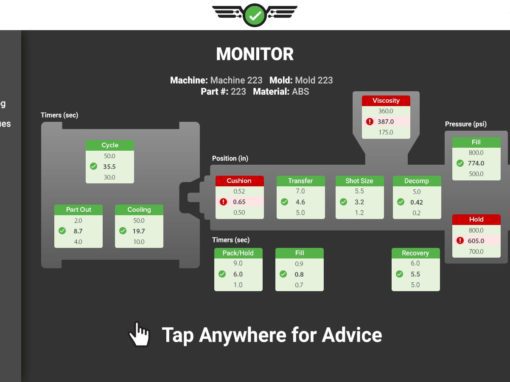Tip of the Day 18: How Not To Bang Your Head Against The Wall
…or your Lynx sensor case (as the case may be).
While we designed the Lynx sensor case to ride on the ejector plate we have found that sometimes damage is occurring to the electronics inside the case. This is common when positive retraction is used, especially at high speeds. We have tried to measure the g forces that occur when the plate stops but the data are so far inconclusive.
I have made an attempt at calculating the g forces based on the yield of the stops. Tracy Shooltz is helping to find out just what that might be. So this discussion is a sort of “thought experiment”. But it shows you how dramatic the reduction in g forces on the sensors could be if you have the customer change the motion of the ejector only slightly.
Here is a worst case: Retraction speed: 12” / sec. Stop plate deflection: 0.15 mils G force could be 1,250 g. That’s twelve hundred fifty times gravity. Of course this does not count the possible ringing of the plate and the vibration that occurs from that.
Changing the retraction speed to 3” / sec. the G force would be 78 g. This our sensors should withstand.
If the plate was set to decelerate over the last 1/10” of an inch of retraction (starting at 12” / sec.) instead of hitting the plates at full speed then the G force would be about 2 g.
Conclusion: Encourage customers to use some precaution in the hammering of ejector plates in either direction. Some simple adjustment of the retraction speed can have a dramatic affect on the life of the sensor.
If you wish to play with the numbers I have attached the spreadsheet.
Disclaimer: This is not proven science. I provide it so that you can see how changing a couple of small settings can save the sensors.

